Hatched in fresh water like all wild salmon, every Autumn, sockeye salmon return from the Pacific to the freshwater streams and lakes where they started life. They use their sense of smell, the water temperature and the memory of their early life, to home in on their original spawning ground. It’s simply amazing that they can do it.
Every four years there’s a dominant salmon-run, when thousands of fish make the journey. The last was in 2018.

Adams River at British Columbia
Enduring months of starvation as they make their way upstream for as much as 800km from the ocean, most arrive exhausted and wounded. With what energy they have left, these fish complete their important mission to lay their eggs and get them fertilized before they finally die.
This is what separates the sockeye from Atlantic salmon. Uniquely, it’s the sockeye that consumes its own life to complete the mission – a sacrifice for future generations. It’s an event loaded with both drama and pathos.
This is what separates the sockeye from Atlantic salmon. Uniquely, it’s the sockeye that consumes its own life to complete the mission – a sacrifice for future generations. It’s an event loaded with both drama and pathos.
Mature Pacific sockeyes first build up their fat reserves in the ocean in preparation for the arduous journey. They start off with lustrous silvery skin, but once they enter the river and stop eating, the fish’s body becomes redder and redder, while the head turns vivid green. It’s not easy for them. Rapids have to be leapt and the abdomen is used to rub the stony riverbed. They also run the gauntlet of predatory bears.
Once their job is done, and thousands of fertilized eggs are deposited in cracks of the pebbles and boulder-strewn riverbed, their emaciated and lifeless bodies are simply food for the birds or, decomposed by bacteria in the water, they are fed on by smaller fish like river carp. It’s a tragic end to the participants in a great naturally dramatic event.
According to studies by Canadian conservationists in British Columbia, of around 4000 eggs that hatch from the joint effort of every single pair of fish, and make their way, first as smolt, to the ocean, on average only maybe two survive to adulthood. These then make the long journey back to where they started.

We had to walk to the site carrying all our equipment, lunch and camera
Finding the Right Spot to Shoot In.
Not unlike the sockeye salmon, my journey to the spawning grounds in the Adams River in October 2018 was not undertaken without a certain amount of hardship.
Official permit obtained and after an early start, we had to walk to the site, a distance that takes between 30-minutes and an hour, carrying all our equipment, lunch and camera. There was no formal path.
We had to wade through the water, stepping on the large slippery stones of the riverbed, adding the hazard of injury to possible loss or damage to kit. From photos of the site, I deduced that I just needed my drysuit but no scuba gear - the water is so shallow - but I was concerned, in the extreme variations of the weather, that my Sony A7R Mk III camera would get hot inside its Seacam silver housing, causing it to fog up.
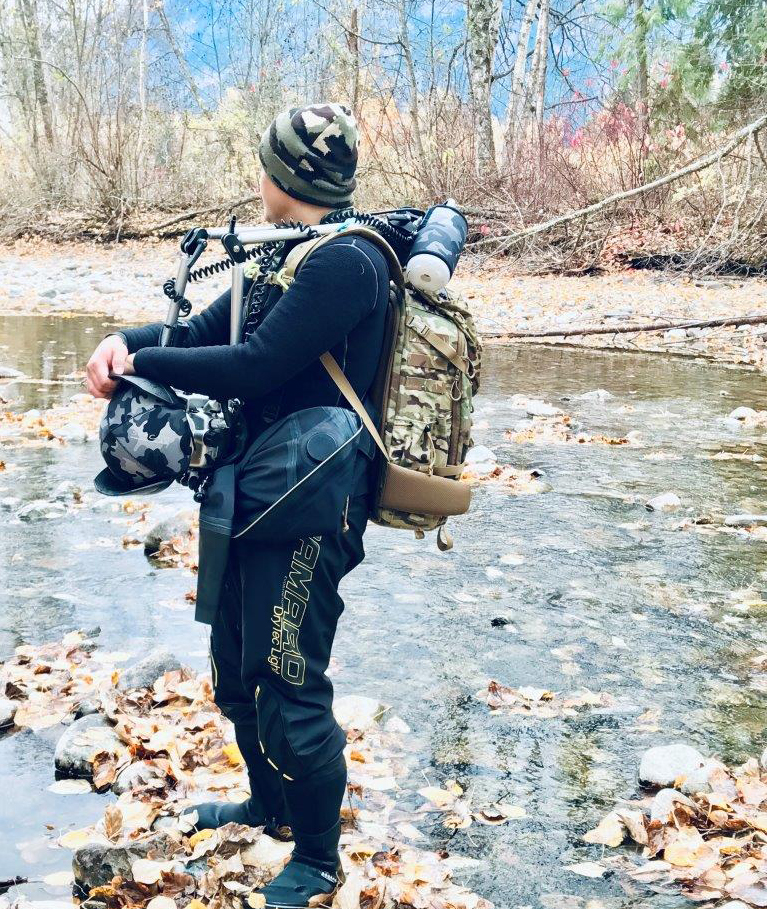
Stepping on the large slippery stones of the riverbed
I had been met with the sight of many feasting birds, together with endless dead fish scattered on the ground. Strangely, there was little smell from the decomposing corpses.
You are prohibited from tampering with the site. Walking through the water entails taking careful steps. Patrolling park rangers ensure the integrity of the Tsútswecw Provincial Park.
Once I’d chosen my spot and start shooting, I was not allowed to go elsewhere. Even moving an inconveniently positioned boulder is frowned upon. Caught by park ranger doing so could forfeit your permit and end picture shooting time.
It Wasn’t Going to Be Easy
The coolness of the river water surprised me. Although I was warm enough in my drysuit, my head and hands were chilled to the bone, unprotected in the 6°C water. I was pleased I had no fogging problems and the Sony A7R Mk III camera performed well. I had with me two lenses – the FE 16-35f2.8 G and the FE 12-24 f4 G – and mainly used the wider-angle lens behind the large dome port of the Seacam housing.
After setting up the camera, I found I had to move slowly in the water in order to get to a position where the fish were. They proved very skittish and I had to avoid casting a shadow or they would tend to scatter. I carefully and uncomfortably dragged myself across the riverbed, strewn with small round boulders that seemed to bruise every part of me, before lying low, waiting for the fish to become accustomed to my presence.
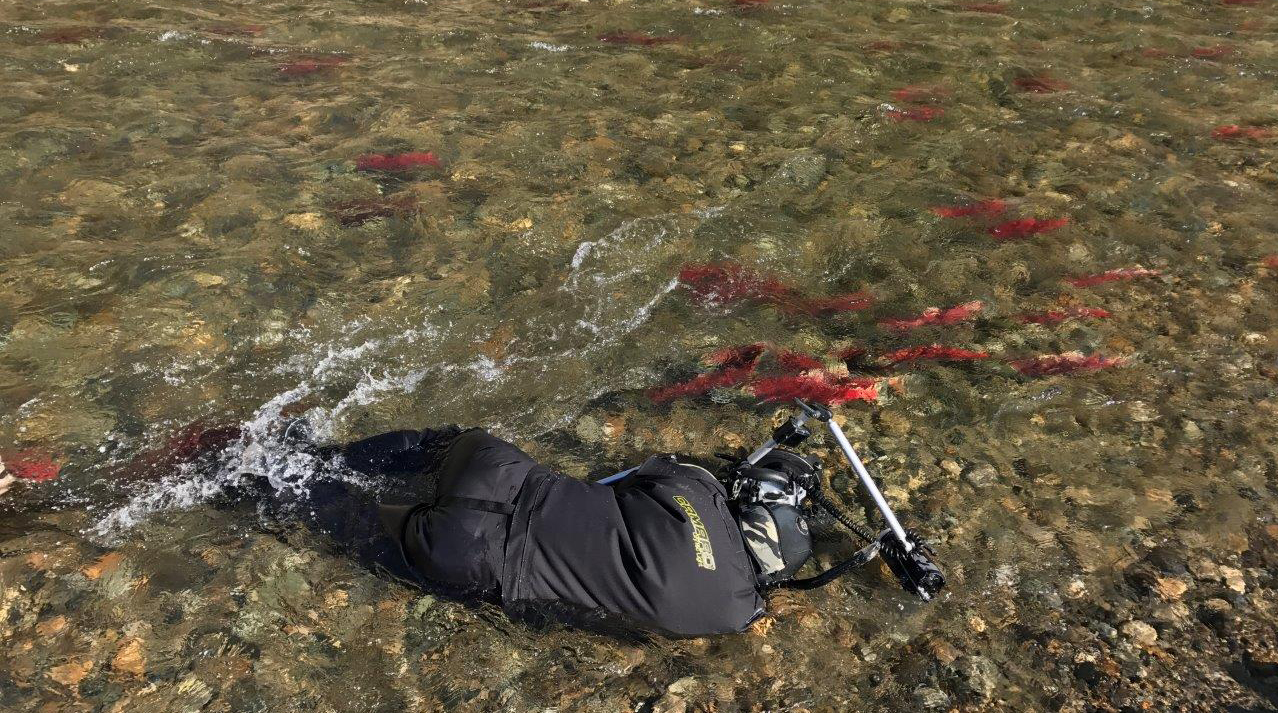
waiting for the fish to become accustomed to my presence
Once I made eye contact, I knew I was in with a good chance of a picture.
Getting familiar with the habits of the salmon, and being patient, meant the semi-surface shooting technique was as successful as I had imagined it would be. I used ISO200 combined with the lens set at f/16, using the pulse of the strobe to light the fish and freeze the action of the water, while a shutter-speed of 1/160 sec. took care of the background exposure.
Of course, only those fishes swimming where there was a strong current looked beautiful. Other fish are mere zombies, white-spotted and lifeless. With a water depth of only 20-30cm, the fast flowing water made it impossible to stand. I discovered I had to lie down or be swept away. The electronic viewing window of the A7R Mk III became invaluable and allowed me to both see what the camera saw as well as being aware of action going on around it.
Of course, only those fishes swimming where there was a strong current looked beautiful. Other fish are mere zombies, white-spotted and lifeless. With a water depth of only 20-30cm, the fast flowing water made it impossible to stand. I discovered I had to lie down or be swept away. The electronic viewing window of the A7R Mk III became invaluable and allowed me to both see what the camera saw as well as being aware of action going on around it.
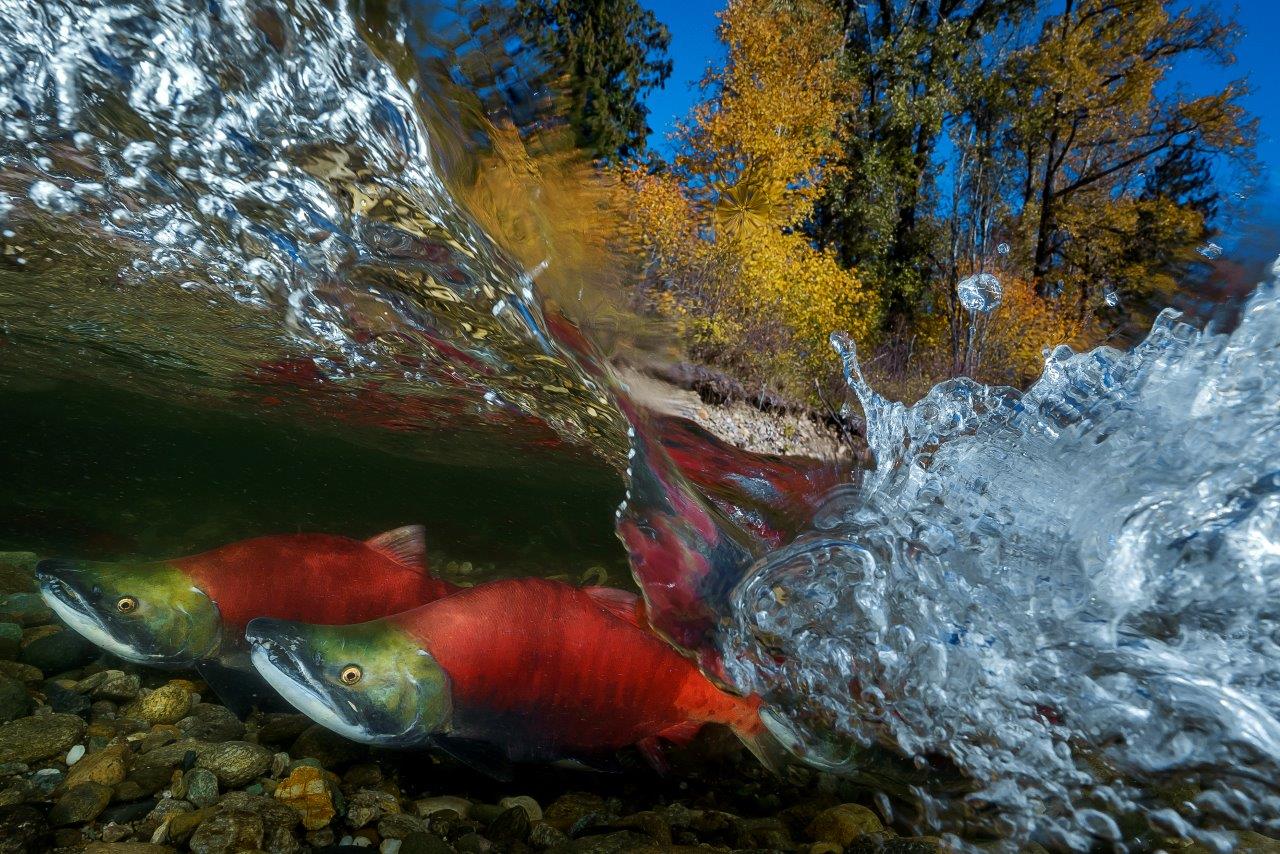
moved as it was by the flow for the Winning Photo
Patience and Persistence Are the Secrets of Success.
The strong rush of water meant that I had to concentrate on one shot at a time because the mounting arm of my Seacam SeaFlash strobe would constantly need readjustment, moved as it was by the flow. I’d spend four to five hours in the water each day, breaking only for some quick lunch, because I was afraid I’d miss an important photo-opportunity.
It wasn’t easy. The changeable weather gave me sleepless nights. Out of a total of six days, there was less than eight hours of sunshine, and at that latitude and at that time of year, daylight hours are limited. For the first two days there was no sun. It was very depressing at first. However, I persevered and got the results I wanted. It was finally worth the effort and the general discomfort.The Tsútswecw Provincial Park in British Columbia, Canada, is located northeast of Kamloops and northwest of Salmon Arm. It stretches along the banks of the Adams River, between the south end of Adams Lake and the western portion of Shuswap Lake.
It can get pretty busy during dominant salmon years. You can get exact dates for best viewing times, current events and more, directly from the Adams River Society.

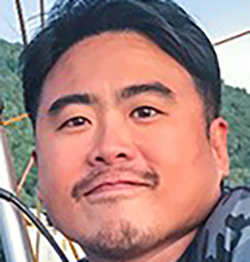
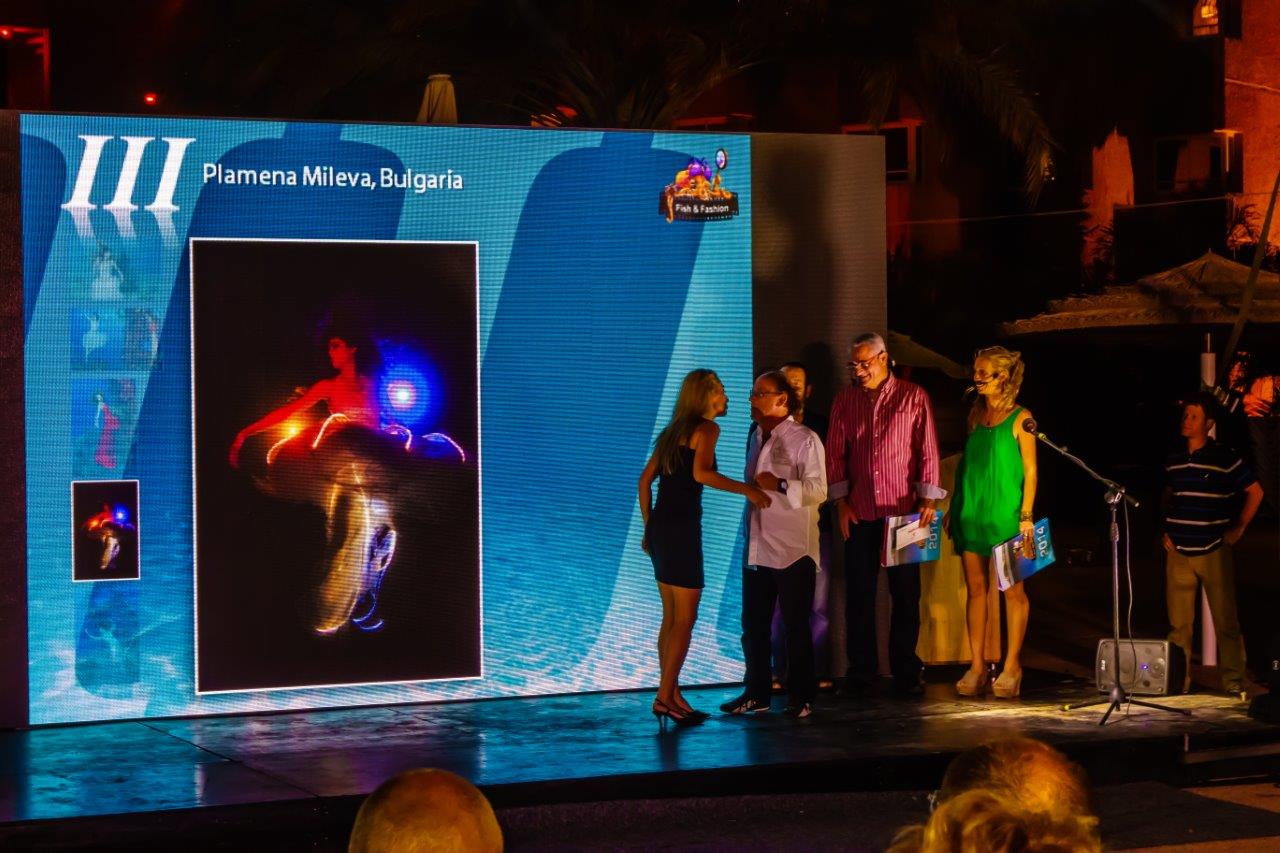
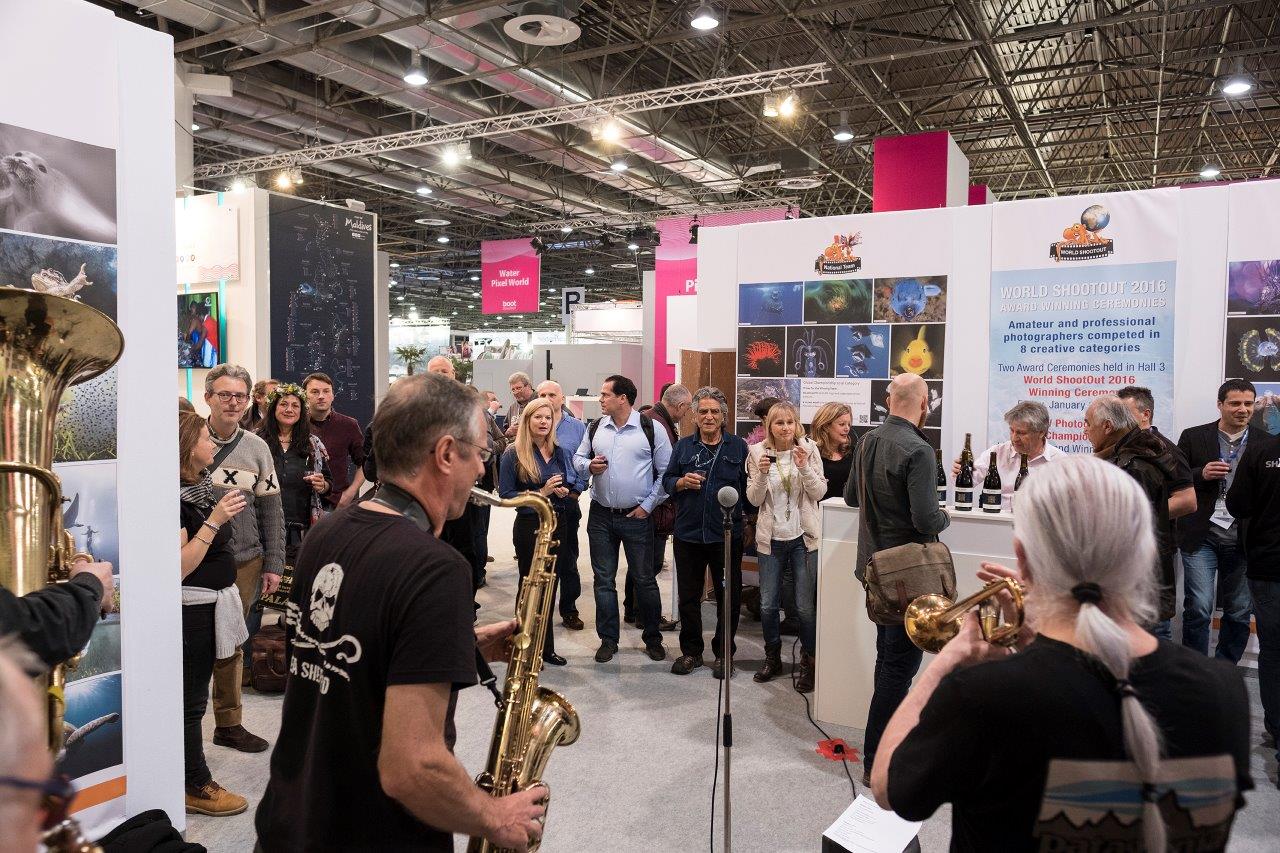
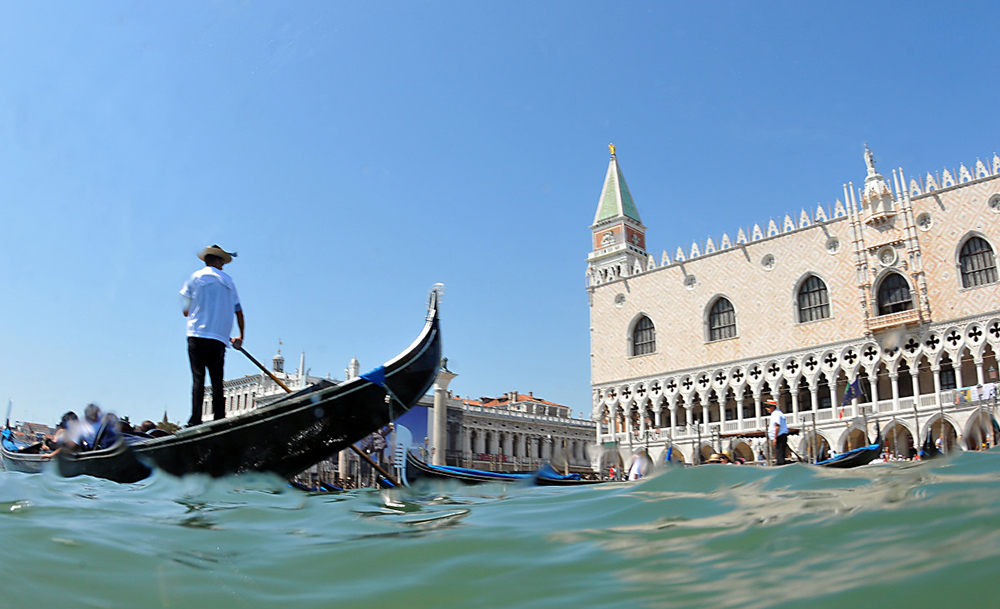
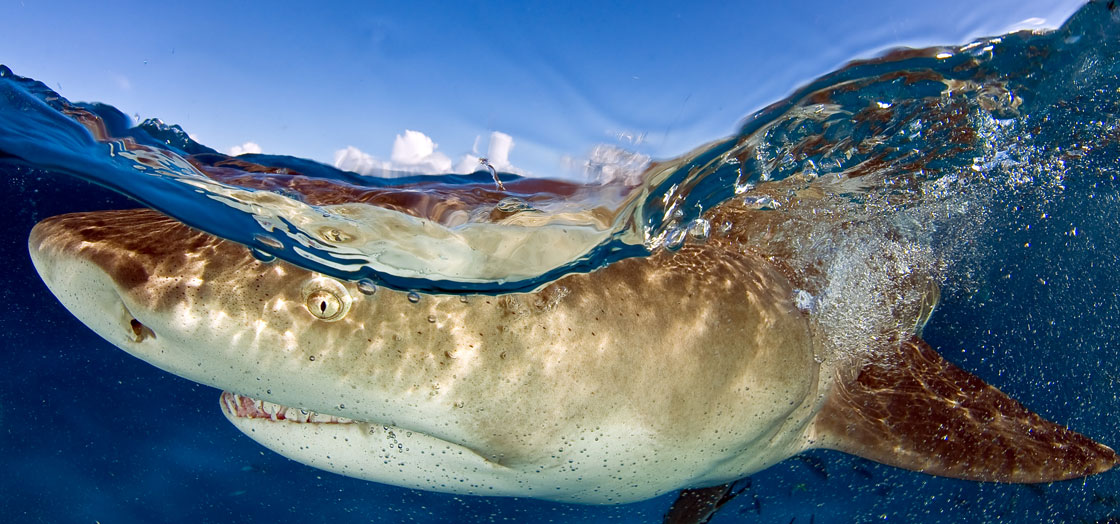


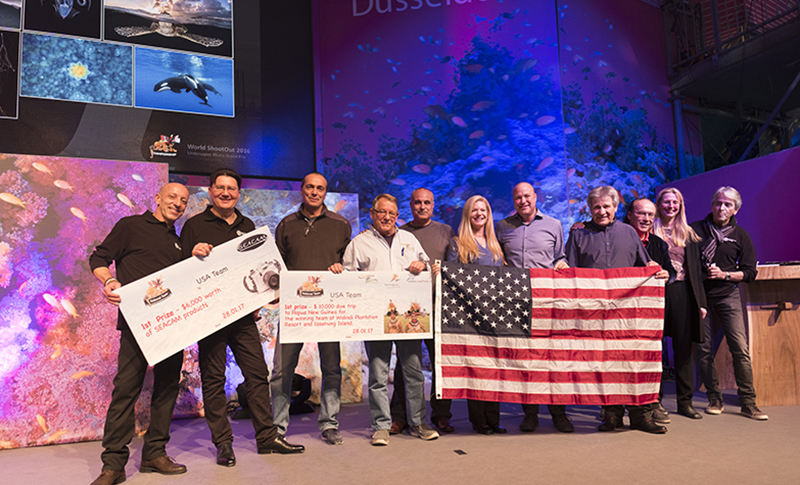
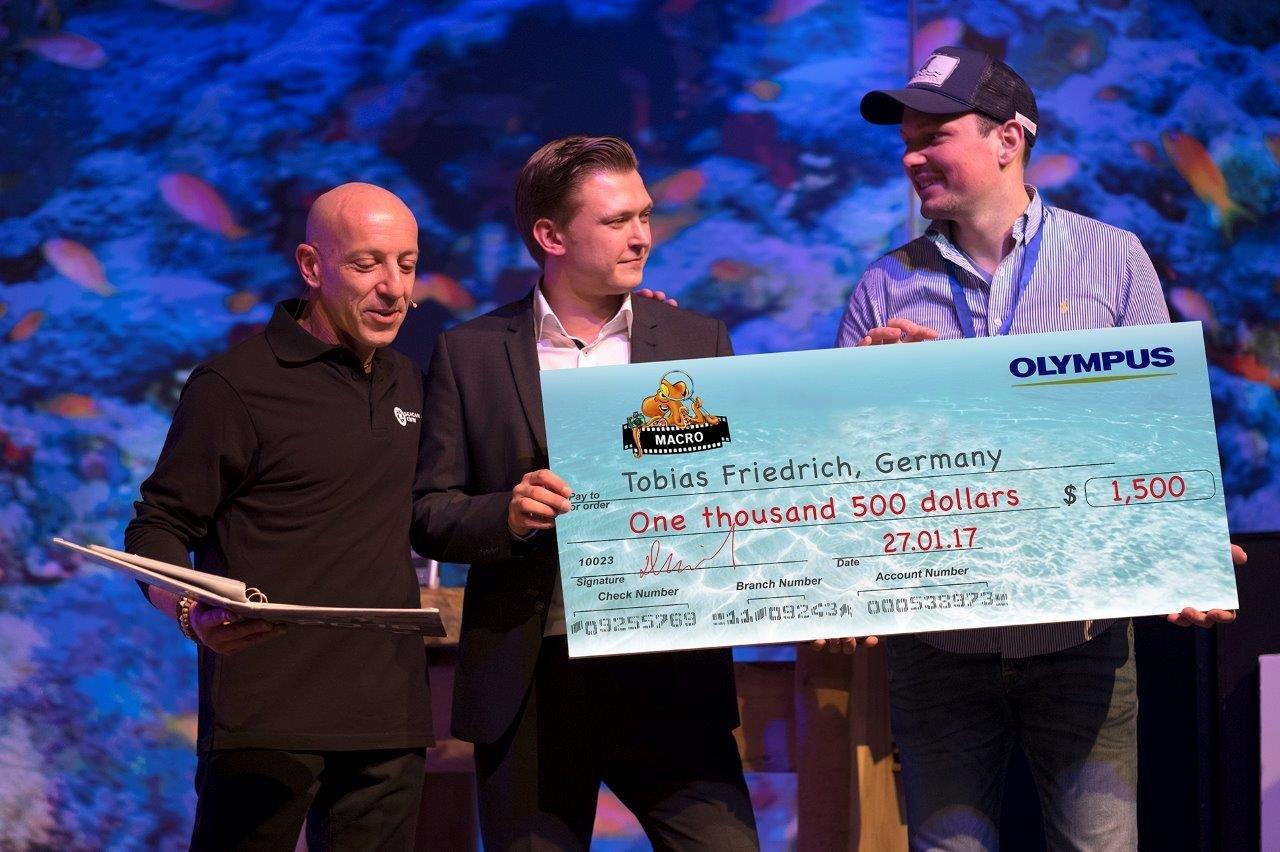

.jpg)
